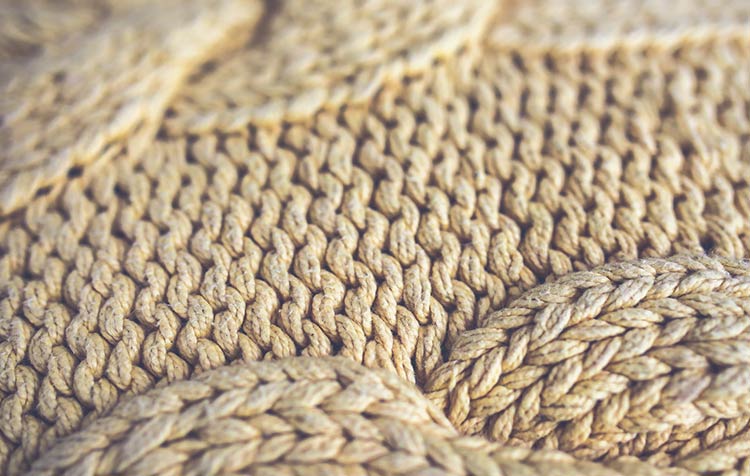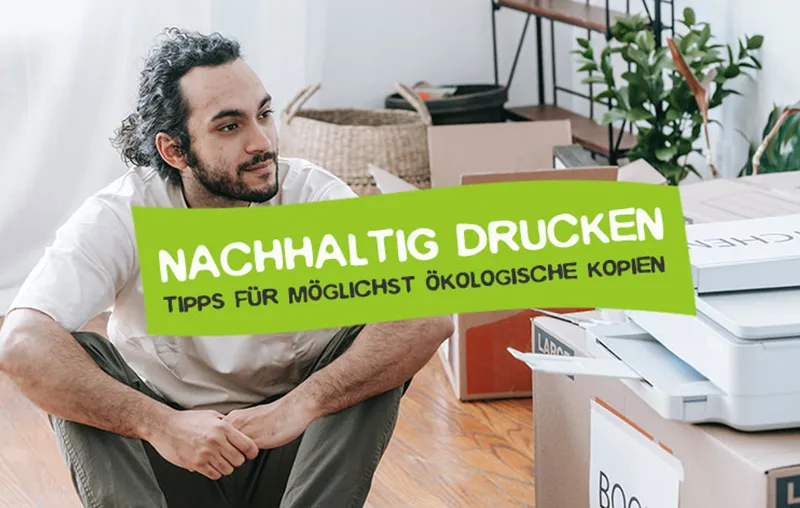What is Organic cotton actually? How is it produced and cared for - and which seals certify it? If you're looking for answers to these questions, you've come to the right place. Due to its properties, cotton is a primary raw material for textile production. Most of our textiles are made of cotton - but its cultivation causes social and environmental problems. Fortunately, a sustainable alternative has long been available in the form of certified organic cotton.
But what is organic cotton, how is it produced and what advantages does it have over conventional cotton? These and other questions about organic cotton I would like to answer you now.
Here is another short Table of contents about the article:
Tip: In my Book Sustainable Living for Beginners habe ich das Thema Kleidung besonders thematisiert und einen grundlegenden Überblick über einen möglichst nachhaltigen Alltag erzeugt. Schau doch Mal rein. 🙂
What is organic cotton?
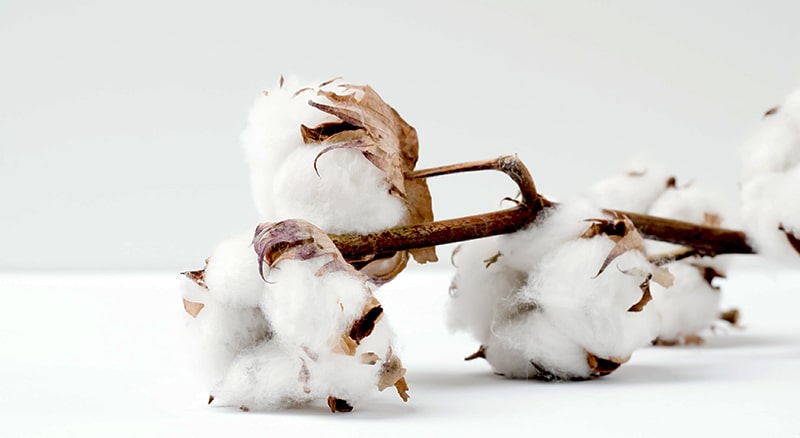
As a rule, it is produced in subtropical countries. Production takes place without the use of chemical pesticides or genetic manipulation. First and foremost, organic materials are ecologically produced fabrics.
Currently, this vegetable raw material is grown in 18 countries, including mainly developing countries. The 5 largest growing countries are India, China, Kyrgyzstan, Turkey and Tajikistan and they account for almost 90 percent of the total production. The largest producer of organic cotton is India with 56 percent, followed by China with about 20 percent.₁ Despite increasing demand, the share of organic cotton in global cultivation is about 0.4 percent. The annual production of cotton is about 115,000 mt with a cultivated area of about 300,000 ha. An estimated 75 percent of organic cotton is produced by smallholder farmers.
The production of organic cotton
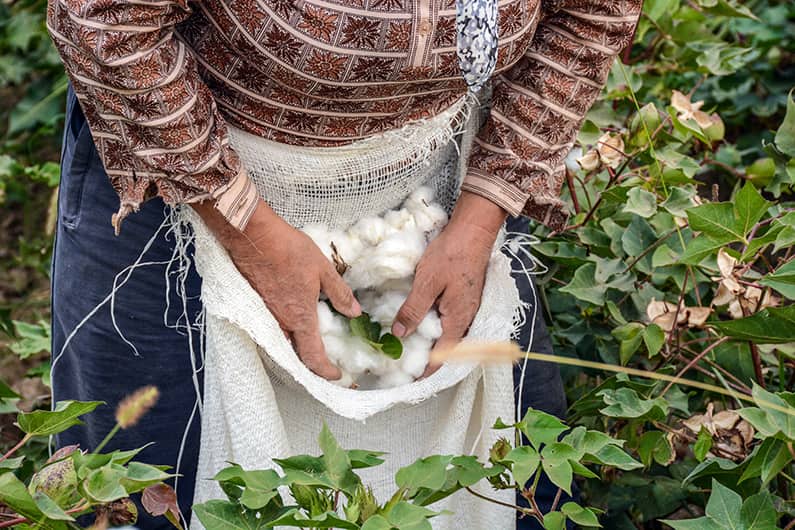
How is organic cotton actually produced? Organic cotton is basically grown according to the legal guidelines and standards of organic farming. Thereby the Use of chemical pesticides and fertilizers prohibited. In addition, in the cultivation of organic cotton. does not use genetically modified organisms.
A clear advantage over conventional cotton is above all in water consumption. This is reduced by more than 50 percent compared to cotton grown without organic standards. Here, the consumption amounts to around 10,000 liters of water per kilogram. In countries like India, it can even be as much as 25,000 liters for one kilogram. Water shortage in dry countries is then favored even more by growing the cotton plants, which by nature need a lot of liquid, in the dry areas and wasting groundwater or other water reserves for watering. But one of the reasons why warm and dry countries are preferred for cotton is that wool molds faster in humid environments.
But of course, organic cotton also consumes a lot of water - yet it is less than conventional cotton plants. Compared to the cultivation of conventional cotton, organic cotton is much more sustainable. Water consumption is reduced due to the use of captured Rainwater lower in not so dry growing areas. Another reason is the use of a hummus layer that is thicker than usual and thus retains moisture better. Since less rewatering is required, there is a water saving of up to 40 percent compared to normal wool. Due to the absence of pesticides, cultivation is also significantly more environmentally friendly. According to estimates, 10 to 20 percent of all pesticides worldwide are used to grow conventional cotton - in Africa the figure is as high as around 90 percent. This is also at the expense of the employees. Organic cultivation thus ensures the protection of the Floors, biodiversity and also the health of the workers.
Careful handling of organic cotton products
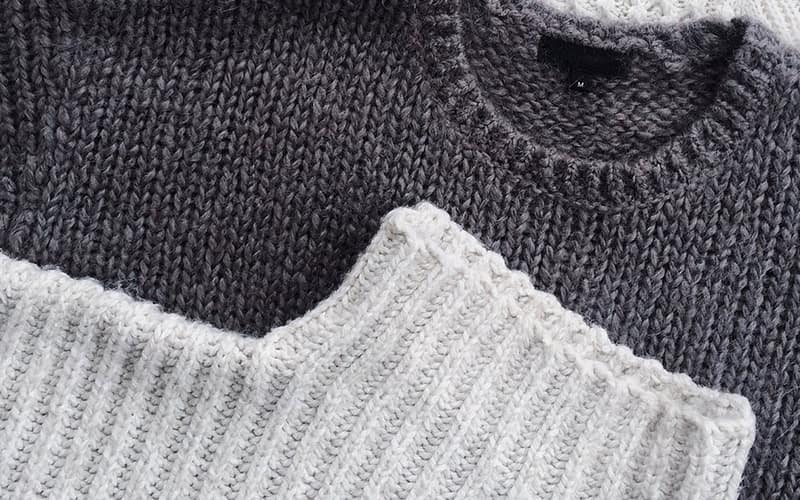
So that shirts, sweaters and other textiles made from organic cotton are both consumed more consciously and cared for, I have here fittingly still some Slow Fashion Tips for you.
Care of organic cotton products
Since there is no chemical pre-treatment of the textiles, you should be a little more careful when cleaning due to a higher sensitivity and pay attention to the washing instructions. Garments made of organic cotton should be washed at 30°C maximum.
Certifying seals for organic cotton
There are certified seals on the world market, which are based on the EU standards, so that we as consumers can trust that it is organically grown cotton. The best-known seals are those of the Organic Content Standard (OCS) and the Global Organic Textile Standard (GOTS).
The GOTS seal is defined by strict environmental requirements on the supply chain and processing - it identifies products that are made from at least up to 70 percent organically produced natural fibers.
Organic cotton in everyday life
Organic cotton has also arrived in the clothing industry. It is much more pleasant on the skin due to the absence of chemicals and is particularly well suited for allergy sufferers. In general, cotton is also very kind to the skin and very popular with people allergic to animal hair. Which is why this wool is also used in about half of all Garments zu finden ist. Um ganz sicher zu gehen, solltest du auf die Produkte mit Siegel achten, die Bio-Qualität auszeichnet.
Notice: "Organic" and "eco" are legally protected terms. So if one of the two designations adorns a textile item, you can be sure that it is not cheeky Greenwashing acts.
5 important facts about organic cotton
In this article, you have of course already learned a lot about cotton and organic cotton. But I would like to give you some important facts that will help you to convince even more people of the conscious consumption of organic cotton products:
- No genetic manipulation: Organic cotton is not genetically modified. In contrast, genetically modified cotton species grow on about three quarters of the world's arable land.₂ The disadvantages include, for example, the Threat to biodiversity or the dependencies of farmers on pesticide producers.
- High cotton demand: Around half of all textiles are made of cotton₃ - this confirms that as a consumer you have enormous potential to bring about positive change for us humans and our environment.
- No pesticides: Organic cotton is grown without toxic pesticides. According to the WHO, the use of pesticides in conventional cotton farming causes around 750,000 people to suffer from chronic diseases every year. And about 20,000 people die every year due to the use of pesticides.₄
- Increasing use of organic cotton: Organic cotton still accounts for less than one percent of total cotton production.₅ But in 2018 alone, global organic cotton production increased by nearly 10 percent.₆
- Low water consumption: Organic cotton has a high but nevertheless significantly lower water consumption than conventional cotton. Depending on the country of production, it is estimated that the manufacture of one kilogram requires between 10,000 and 17,000 liters of water.₇
Is organic cotton more sustainable than conventional cotton?
We can confidently answer this question with YES at the latest after the available facts about organic cotton. Organic cotton is the decelerated, healthier and above all more sustainable alternative compared to conventional cotton. As consumers, we ourselves can ensure that its market share increases and makes the world a little better every day.
Do you have questions, tips or your own experiences with organic cotton that you would like to share? Then I look forward to your comment.
Stay sustainable,

PS: In my Environmental protection blog you will get many more tips around a sustainable life. Just look around a bit.
References:
₁ Textile Exchange: 2016 Production, available at http://aboutorganiccotton.org/de/stats. [19.12.2019].
₂ Forum Bio- und Gentechnologie e.V.. (2019): Cotton (as at: 15.11.2019), available at https://www.transgen.de/datenbank/pflanzen/1941.baumwolle.html. [19.12.2019].
₃ World Wildlife Fund: Cotton - Overview, available at https://www.worldwildlife.org/industries/cotton. [19.12.2019].
₄ Rethinknation: organic cotton is actually that much better! - Conventional VS Organic Cotton, YouTube, 03 Mar 2019, web, 19 Dec 2019 10:33, in: https://www.youtube.com/watch?v=C4x3q79qXhI.
₅ CANTANA OHG: ALL ABOUT BIO COTTON, available at https://www.cantana.com/alles-ueber-bio-baumwolle. [19.12.2019].
₆ Utopia GmbH: 10 facts: What you should know about (organic) cotton, available at https://utopia.de/ratgeber/bio-baumwolle-wissenswertes. [19.12.2019].
₇ VERBRAUCHER INITIATIVE e.V.: Water consumption - A lot of water for little cotton, available at http://www.oeko-fair.de/index.php/cat/798/title/Wasserverbrauch. [19.12.2019].

